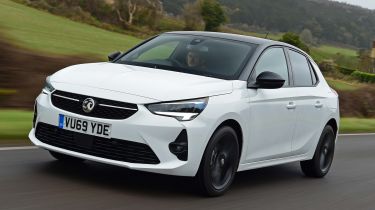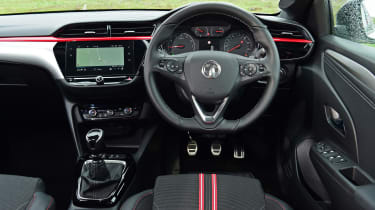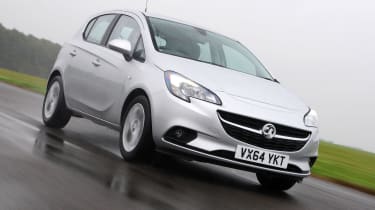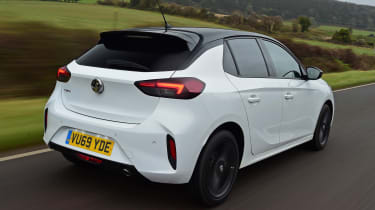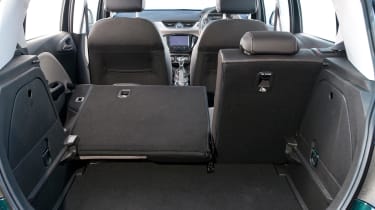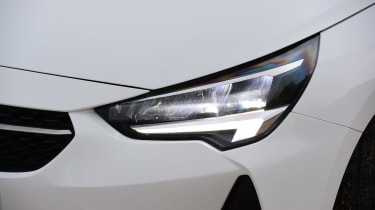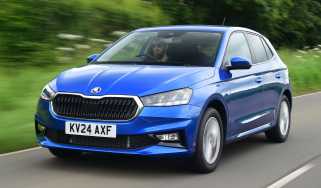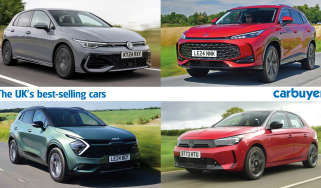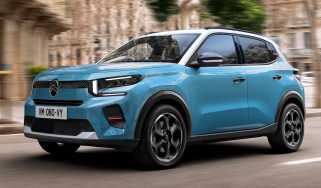Vauxhall Corsa: old vs new
We compare the latest Vauxhall Corsa hatchback with the old one
The Vauxhall Corsa is a British motoring icon - perhaps not in the same way as an Aston Martin or a Bentley, but in a much more down-to-earth way. Many people own one as their first car, and it’s chosen by thousands of others who want a well-equipped runabout with low monthly payments.
The Corsa’s story starts almost 40 years ago (it started out as the Nova in the UK), and the newest model shows just how far cars have come since the early 1980s. The badge is the same and it still competes with the Renault Clio, Ford Fiesta and SEAT Ibiza, but almost everything else is different. Even over its predecessor, sold from 2014-2019, the latest Corsa is a vast improvement - offering funkier styling, more equipment, better fuel economy and an electric version, called the Vauxhall Corsa-e, for the first time.
Design
When the previous Vauxhall Corsa was launched in 2014, its design was a slightly more modern interpretation of the car that came before it. Despite more noticeable body creases and redesigned lights, those two cars look pretty similar now, and the last Corsa had started to look quite dull against more stylish rivals.
The old Corsa might not get many second glances but the new Corsa certainly will. It stands out against the Ford Fiesta and Volkswagen Polo, with much sharper styling than before and the option of two-tone paintwork. The Corsa was the first new car to be produced after Vauxhall was sold to the Peugeot-Citroen group, so it shares its underpinnings with the Peugeot 208, but the two cars have completely different identities. Besides an ‘e’ badge, the electric model of the Corsa looks exactly the same as petrol and diesel versions.
Interior
Vauxhall gave the previous Corsa a touchscreen for the first time, which made it look a bit more modern than the button-heavy dashboard design in the Fiesta. It was pretty well equipped, too; all models got Bluetooth and cruise control, while all above base-spec benefitted from heated seats, the touchscreen with smartphone mirroring, air conditioning, auto lights and wipers and even a heated leather steering wheel. We thought that some of the plastics felt a bit cheap, though, and on the whole interior quality was better in rival models.
We’ve no such complaints with the latest Corsa; material quality is much better than before, with plenty of soft-touch areas and a welcome coloured stripe that lifts the interior on sportier models. It’s not a noticeable step down from the inside of a Volkswagen Polo or even an Audi A1, while all models now feature alloy wheels, LED headlights and a seven-inch screen. The extra tech means prices have risen but Vauxhall is known for its affordable PCP and PCH finance offers so monthly payments may not be too severely affected.
Economy and performance
Like many superminis, the old Corsa started with a low-powered engine with cheap insurance. Depending on age, this engine had either 69 or 74bhp, while many buyers opted for the 89bhp version (0-62mph takes around 15.5 seconds in the former, while the extra power reduced that to 13.2 seconds). Throughout the car’s life, 99bhp and 113bhp petrol engines were offered too, alongside a 94bhp diesel engine. Performance models came in the form of 148bhp GSi and 202bhp VXR models, but these are rare.
Changes to the emissions test means the new Corsa might look less economical than the last one but the 'WLTP' quoted figures are much more realistic and easier to achieve. The entry-level 74bhp engine returns 51.4mpg, while the 99bhp version (the one we recommend) isn’t far behind at 47.9mpg. A 101bhp diesel is still available; it manages 67.3mpg but is much more expensive than the petrol engines.
There’s also an electric Vauxhall Corsa-e for the first time, which manages over 200 miles on a single charge and is easily the fastest model in the range. It looks a lot more expensive than petrol and diesel models, but it’s eligible for the government’s £3,000 plug-in car grant (PiCG) and offers substantially lower running costs.
Practicality
Even though the last Corsa was no bigger than its predecessor, interior space was reasonable. There’s enough room for three people across the rear bench and a good amount of headroom, although the boot is slightly smaller than the equivalent Fiesta’s (285 vs 292 litres). It’s also worth pointing out that the cheapest trims didn’t offer split-folding rear seats, so we’d look out for these if you’re looking for a used Vauxhall Corsa.
Unlike the last Corsa, the new one doesn’t come with a choice of three doors: it’s five-door only. We found that adults were a little cramped in the back, so perhaps Vauxhall has prioritised boot space for this new model. The sloping roofline doesn’t help either and, overall, a SEAT Ibiza or Hyundai i20 seem more spacious. The 309-litre boot is handy, although the Ibiza’s 355-litre boot is even more impressive.
Safety
Both the new and previous Corsa scored four stars in their respective Euro NCAP safety tests, which were carried out in 2014 and 2019. The test gets more stringent every year, so the new Corsa will be safer than the previous one. Its 84% and 86% scores for adult and child protection are very good, and standard safety equipment includes automatic emergency braking, traffic sign recognition and lane-keeping assist. The four-star score matches the mechanically similar Peugeot 208, but the Ford Fiesta and Renault Clio both got a five-star rating.
Verdict
The previous Vauxhall Corsa will look like a tempting buy, especially if it’s heavily discounted. But you’ll need to compare rates and finance deals, as new cars are often sold at much lower interest rates than used ones. You might find the difference in cost between the old and new Corsas is less than you expected. The new Corsa is more stylish, safer, more practical and feels like a more upmarket car than the one it replaced, so we recommend choosing the latest model if you can afford it.
If other superminis are on your shortlist, check out our guide to the best small cars.
Recommended
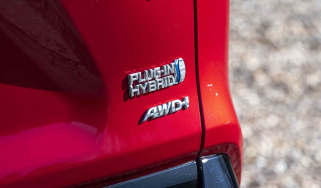
Petrol and diesel car ban relaxed with hybrids permitted beyond 2030
Most Popular
Tips & advice

Car dashboard warning lights: what does each symbol mean?

Electric car charging stations: public networks, charger types, apps and maps


